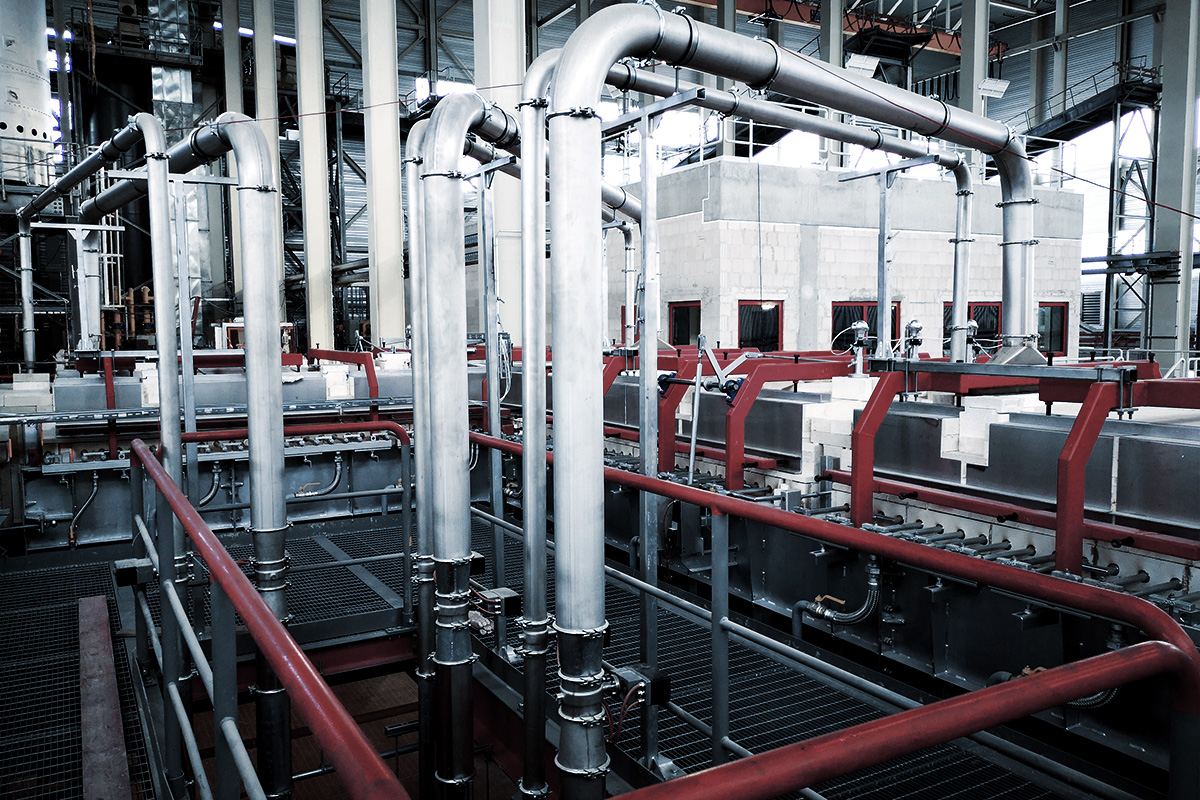Almost all cooling systems used in the glass conditioning process rely on heat transfer by radiation. This takes place from a hotter body – the glass bath – to a cooler body, usually either in the surroundings or part of the refractory roof. A number of different cooling systems are used on SORG® distributors and forehearths, depending on the particular application.
RADIATION COOLING SYSTEM
The open radiation cooling system uses the surroundings to absorb heat radiated by the glass. It involves the provision of openings in the superstructure, sized and located accordingly to the planned cooling capacity. The actual heat loss through the opening is changed by the movement of a damper block to adjust the size of the opening. This system is usually applied to distributors and the rear forehearth zone.
DIRECT AIR COOLING SYSTEM
Cooling air is blown directly into the combustion space of the superstructure just below the roof, to cool the roof refractories. Heat transferred from the hotter glass bath by radiation to reheat the roof is therefore removed from the glass. The amount of heat removed can be adjusted by varying the volume of air blown into the superstructure. This system is usually applied to the central area of distributors and 340S+ and STF forehearths.
INDIRECT AIR COOLING SYSTEM
The area to be cooled is covered by a thin refractory tile, made of an excellent thermal conductivity material. A small duct running parallel to the forehearth axis is provided in the superstructure refractory above the tile. When cooling air is blown along this duct, the upper surface of the thin tile is cooled.
This reduces the temperature of the lower surface of the tile. Energy is removed from the glass bath by radiation. The cooling effect is varied by adjustment of the volume of cooling air blown along the duct. This system is easy to control and is highly stable. This type of cooling system is usually applied to 240S+ forehearths, 340S+ forehearths and all-electric forehearths.
BOTTOM COOLING
Cooling air is blown through ducts in the substructure refractories below the centre of the channel and aligned with the channel centreline. The cooling effect can be influenced by adjusting the air quantity. This is an indirect air cooling system applied below the channel bottom.
ADVANTAGES
- Radiation Cooling System: high heat transfer rate
- Direct Air Cooling System: good controllability
- Indirect Air Cooling System: no overcooling risk and stable operation
- Bottom Cooling: the only system specifically designed for cooling bottom glass
